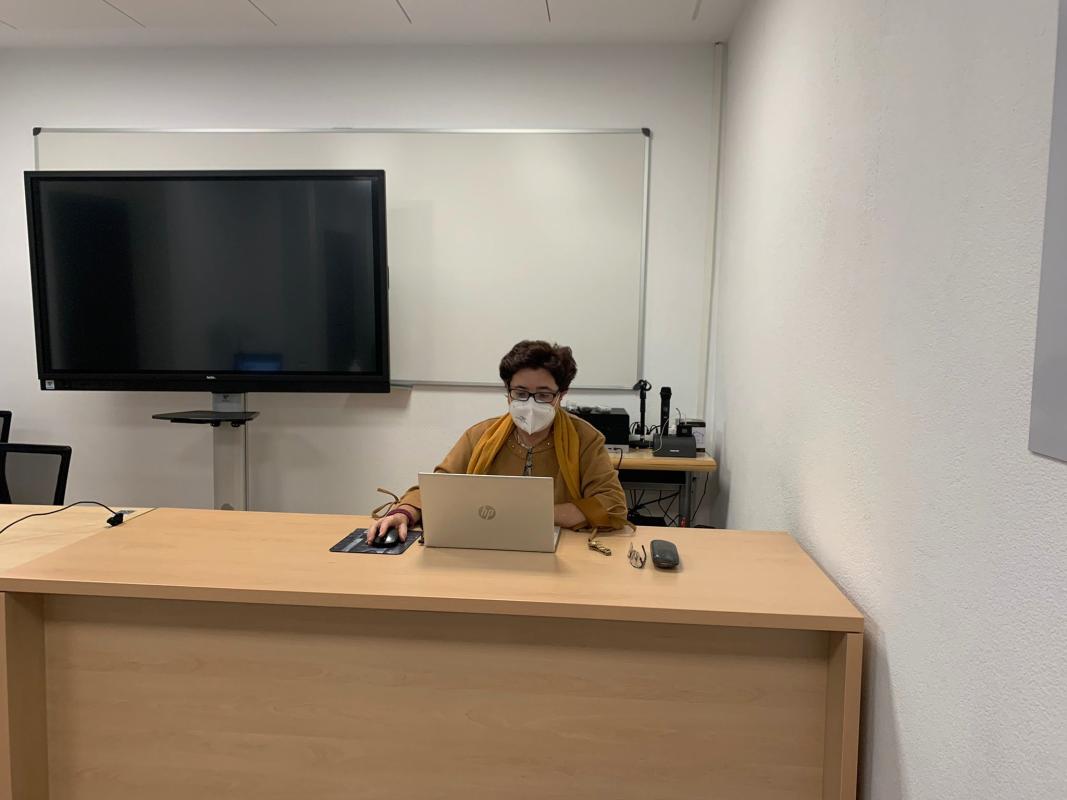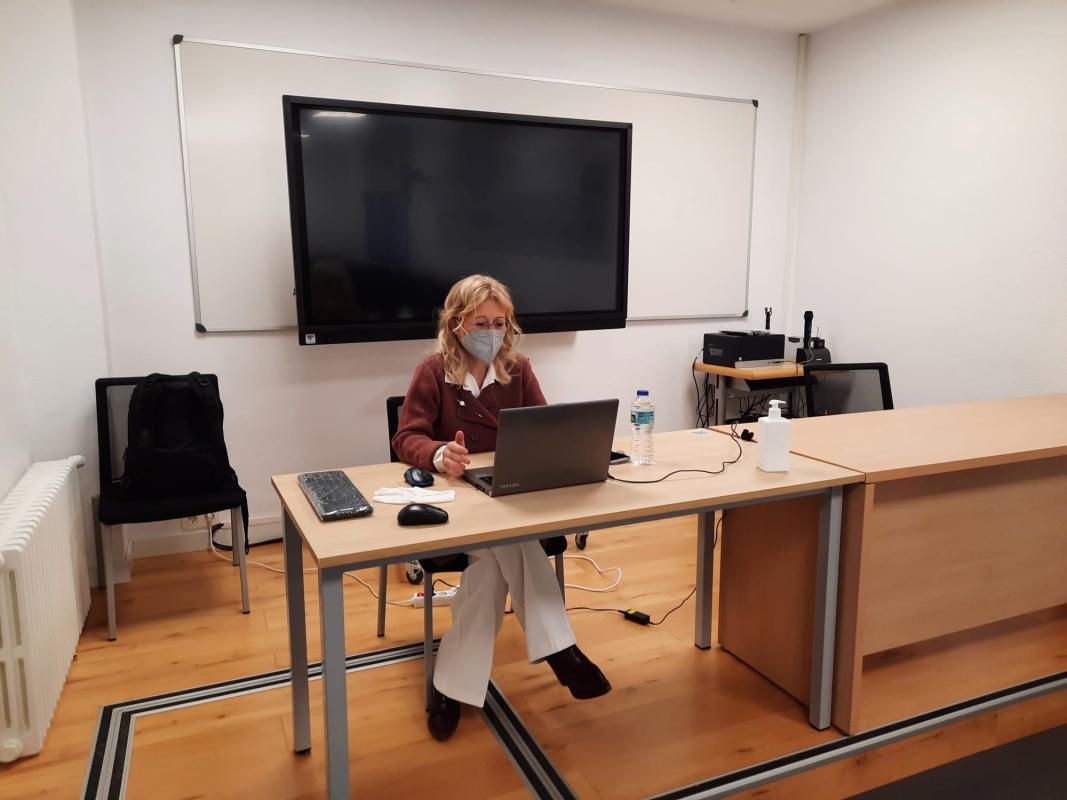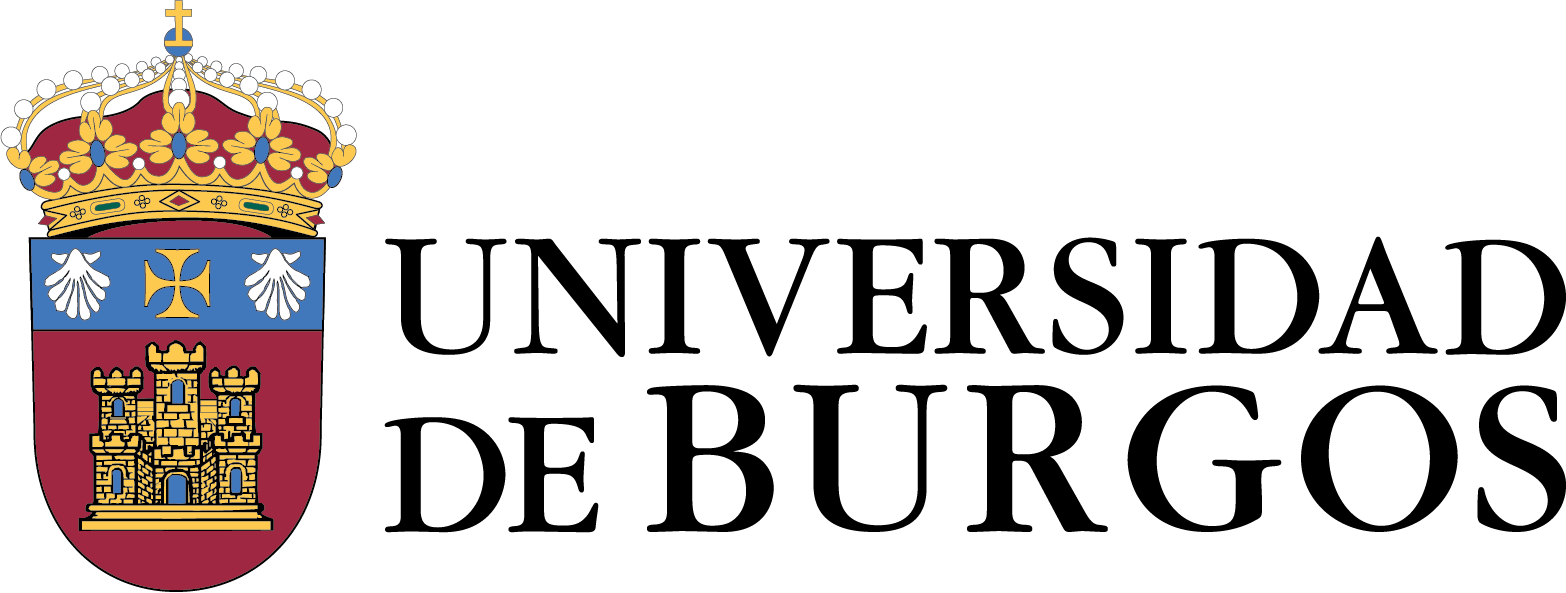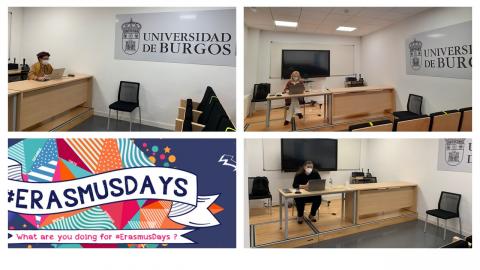UBU participated in Erasmusdays 2021
17 Oct 2021
SmartArt advances in its development beyond the proposed objectives
The SmartArt project advances in its development beyond the objectives proposed at its inception and addresses an interesting result of generalisation of the teaching-learning methodology to other areas of knowledge, Neuropsychology and STEAM subjects in addition to the initial one, History of Art.
Once again, the Strategic Partnership of the SmartArt Project, co-funded by the European Commission, has participated in the ERASMUSDAYS 2021 conference with the aim of presenting the progress made in the project during its two years of operation.
Three papers were presented during the conference. The first, "How to design learning materials using an avatar", was given by PhD. María José Zaparaín Yáñez. The lecturer at the University of Burgos is a specialist in gamification applied to Art History learning.

In his presentation, he addressed aspects of avatar design aimed at promoting self-regulated learning in adults. He also focused on the development of an avatar within the virtual classroom for learning Art History in the SmartArt project, explaining its characteristics, functions and resources.
Currently, within the field of Art History, the module on the origins of monasteries in Europe has been completed and two more modules are in the process of being developed, one on Classical Greek Sculpture and the other on Italian Renaissance painting.
Next, PhD. María Consuelo Sáiz Manzanares, coordinator of the project, explained in her presentation "How to develop process-oriented evaluation rubrics in an intelligent virtual classroom within the SmartArt project".
Sáiz Manzanares talked about how to elaborate rubrics for the analysis of conceptual, procedural and attitudinal competences. These rubrics will serve both as an assessment tool for teachers and as a self-assessment tool for students. Professor Sáiz-Manzanares also pointed out the advantages of using virtual learning platforms for personalised student monitoring, as these systems record all the information on users' learning behaviour in the form of records or logs. The analysis of these records, with the use of Learning Analytics or Educational Data Mining techniques, facilitates the knowledge of the learning patterns of each student and, depending on these patterns, offers personalised learning programmes.

The coordinator of this project explained that two additional virtual classrooms have been created, one related to the learning of Neuropsychology concepts that has been implemented with students of the Degree in Occupational Therapy and another on the learning of Physics concepts that has been implemented with students of Secondary Education.
Finally, Professor Sandra Rodríguez Arribas, a specialist in big data and social networks, gave a talk on "Social networks as an element for disseminating teaching innovation projects".
In her dissertation, she explained how to disseminate information on social networks through the use of programming systems using Hootsuite. This is a sophisticated resource that allows programming the dissemination of content on various social networks in different languages. Specifically, in the SmartArt project, Twitter, Instagram and Facebook have been used, in addition to the YouTube channel. The use of this technology reduces time costs and improves the reach of the dissemination.
The SmartArt project is progressing in its development beyond the objectives proposed at its inception and addresses an interesting result of generalisation of the teaching-learning methodology to other areas of knowledge, Neuropsychology and STEAM subjects in addition to the initial one, Art History, and all these results have had a very positive assessment in the interim report of the project carried out by the SEPIE.
About the SmartArt project
The SmartArt project is focused on the generation of new ways of teaching Art History in adult education through the use of new technologies with eye-tracking software that will record the motivation and learning of users and create different profiles, personalising learning and the needs of each person, allowing adults to "look" at art with "other eyes".
Its objectives focus on the design of a virtual classroom for learning these contents, generating a virtual environment that integrates self-regulated learning tools, a personalised context in which different hypermedia resources are used (avatars, automatic feedback, records of learning patterns, etc.), with the use of different data processing and analysis techniques, as well as artificial intelligence and data mining.
Likewise, in its two years of existence, in addition to learning the History of Art, two more classrooms have been developed, one for learning Neuropsychology and the other for learning STEM subjects.
In addition to the University of Burgos, this strategic partnership involves the University of Oviedo, the Portuguese University of Minho and the University of Valladolid, as well as the companies Bjäland Technologies (Spain) -in charge of technological development- and Paragon Limited (Malta) -responsible for the multisectoral transfer of results-.
The conference took place in the Salón de Grados of the Faculty of Health Sciences of the University of Burgos and the content of the conference can be followed on the YouTube channel of the SmartArt Project.
The results of the research carried out can be consulted and downloaded free of charge on the project's website in the three languages that make up the Strategic Partnership (Spanish, English and Portuguese).
Two more events this year
Before the end of the year, other project events will be held, one in the Convent of San Francisco (Silos) in collaboration with the Silos Foundation, and another in Aranda Town Hall, both collaborating entities of the SmartArt project, where the intellectual transfer and enrichment products and the interactive VLE platform will be presented.

